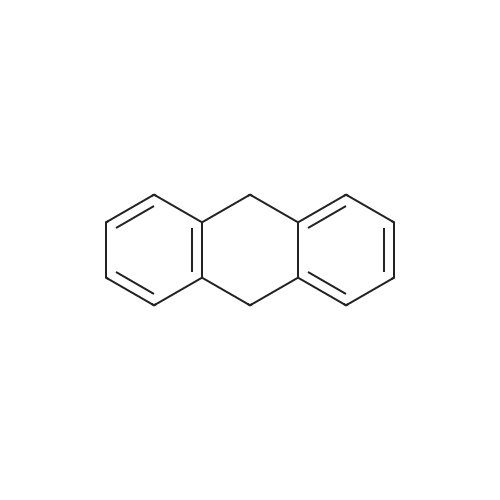Computational and experimental strategies for combating MBL P. aeruginosa (MBLPA) biofilms using phytochemicals: Targeting the quorum sensing network
Maryum Fakhar
;
Mehboob Ahmed
;
Anjum Nasim Sabri
Saudi J. Biol. Sci.,2024,31(6):104001.
DOI:
10.1016/j.sjbs.2024.104001
More
Abstract: Pseudomonas aeruginosa is a Gram-negative opportunistic bacterium, ubiquitously found in nature and causative agent in many infections. Due to increased antibiotic resistance, there is a need to develop more robust antibacterial agents from natural sources. In this study, we worked on two metallo-β-lactamase (MBL) producing Pseudomonas aeruginosa strains and targeted the Quorum Sensing mechanism (QS) of these bacteria to combat antibiotic resistance. Our study aimed at using phytochemicals which have been used since centuries in herbal medicine. We used fifteen commercially available phytochemicals and check their effects on biofilm formation, quorum sensing and inter-related mechanisms. Sub-inhibitory concentration of isoliquiritin inhibited biofilm formation 55 % in P8 at day 6 and 48 % in P6 at day 6; quorum sensing 83 % in P6 and 61 % in P8 whereas sub-inhibitory concentration of 6-gingerol suppressed biofilm formation by 48 % in P8 at day 6 and 44 % in P6 at day 6; quorum sensing 69 % in P6 and 48 % in P8, respectively. The results indicated isoliquiritin, epigallocatechin gallate, eugenol, luteolin and chrysin to be the potential candidates in inhibiting QS and related mechanisms. Isoliquiritin which was never been used before against biofilm and QS related studies, showed remarkable results and found to be more efficient in inhibiting QS than 6-gingerol –a known QS inhibitor. For examining the molecular interaction between phytochemicals and QS, In-silico molecular docking was performed between phytoligands and four QS proteins (Las I, Las R, RhlI and Rhl R). In-silico docking analysis revealed that isoliquiritin showed strong bond with amino acids (Trp34, Asp35, Asp35, Tyr105, Arg104, Val138, Thr140) present at the active site of RhlI with binding energy value of ?8.4 kcal/mol as compared to that of 6-gingerol with Rhl1 (?7.3 kcal/mol). In conclusion, our study may help in controlling nosocomial infections caused by carbapenem-resistant metallo beta-lactamase P. aeruginosa (MBL-PA) by utilizing these phytochemicals in biofilms disruption and quorum sensing inhibition. Moreover their synergism with antibiotics may help in lowering the MIC of carbapenem antibiotics against such Multi-drug resistant strains.
Keywords:
QS ;
Biofilm ;
MBL Pseudomonas ;
Isoliquiritin
Purchased from AmBeed:
84-65-1
 biofilms using phytochemicals Targeting the quorum sensing network.png)
Systematic analysis of gut bacterial carcinogen metabolism and its functional consequences
Boyao Zhang
;
George-Eugen Maftei
;
Bartosz Bartmanski
, et al.
bioRxiv,2024:2024.05.20.595058.
DOI:
10.1101/2024.05.20.595058
More
Abstract: Organic carcinogens, in particular DNA-reactive compounds, contribute to the irreversible initiation step of tumorigenesis through introduction of genomic instability. Although carcinogen bioactivation and detoxification by human enzymes has been extensively studied, carcinogen biotransformation by human-associated bacteria, the microbiota, has not yet been systematically investigated. We tested the biotransformation of 68 mutagenic carcinogens by 34 bacterial species representative for the upper and lower human gastrointestinal tract and found that the majority (41) of the tested carcinogens undergo bacterial biotransformation. To assess the functional consequences of microbial carcinogen metabolism, we developed a pipeline to couple gut bacterial carcinogen biotransformation assays with Ames mutagenicity testing and liver biotransformation experiments. This revealed a bidirectional crosstalk between gut microbiota and host carcinogen metabolism, which we validated in gnotobiotic mouse models. Overall, the systematic assessment of gut microbiota carcinogen biotransformation and its interplay with host metabolism highlights the gut microbiome as an important modulator of exposome-induced tumorigenesis.
Purchased from AmBeed:
446-86-6 ;
121-66-4 ;
607-35-2 ;
67-20-9 ;
59-87-0 ;
117-39-5 ;
57-97-6 ;
5131-60-2 ;
512-56-1 ;
62-44-2 ;
6959-48-4 ;
84-65-1 ;
137-17-7 ;
117-39-5 ;
153-78-6 ;
1614-12-6 ;
298-81-7 ;
320-67-2 ;
99-55-8 ;
94-52-0 ;
101-61-1 ;
103-33-3 ;
114-83-0 ;
64091-91-4 ;
53-96-3 ;
3817-11-6 ;
90-94-8 ;
613-13-8 ;
56-57-5 ;
91-64-5 ;
26148-68-5 ;
101-80-4 ;
139-65-1 ;
366-70-1 ;
389-08-2 ;
99-59-2 ;
132-32-1 ;
105650-23-5 ;
394-69-4 ;
3544-23-8 ;
389-08-2 ;
320-67-2 ;
404-86-4 ;
82-28-0 ;
2832-40-8 ;
2475-45-8 ;
129-15-7
...More

Exploring Eutectic Mixing of Quinones for Engineering High Energy-Density Electrolytes
Emily Penn
;
Antonio Baclig
;
Devi Ganapathi
, et al.
Chem. Mater.,2023,35(14):5255-5266.
DOI:
10.1021/acs.chemmater.3c00156
More
Abstract: Eutectic electrolytes can attain high concentrations of redox-active species, offering a path toward high energy density redox flow batteries. Here we introduce a new entropically-driven eutectic mixing approach using organic small molecules. By mixing chemically similar redox-active species, we engineer highly concentrated, low viscosity liquids composed almost entirely of redox-active molecules. Using quinones as a model system, we discover a ternary benzoquinone eutectic mixture and a binary naphthoquinone eutectic mixture which have theoretical redox-active electron concentrations of 16.8 and 8.8 M e–, respectively. We investigate compatibility with protic supporting electrolytes and quantify ionic conductivity and viscosity of quinone eutectic electrolytes across multiple states of charge. A binary naphthoquinone eutectic electrolyte with a protic ionic liquid supporting electrolyte (7.1 M e–, theoretical volumetric capacity 188 Ah L–1) achieves a volumetric capacity of 49 Ah L–1 in symmetric static cell cycling. These preliminary results suggest that entropy-driven eutectic mixing is a promising strategy for developing high-energy density flow battery electrolytes.
Purchased from AmBeed:
695-99-8 ;
553-97-9 ;
3602-55-9 ;
84-65-1 ;
288-32-4 ;
130-15-4 ;
2397-59-3 ;
137395-55-2


 Chemistry
Chemistry
 Pharmaceutical Intermediates
Pharmaceutical Intermediates
 Inhibitors/Agonists
Inhibitors/Agonists
 Material Science
Material Science















 For Research Only
For Research Only
 120K+ Compounds
120K+ Compounds
 Competitive Price
Competitive Price
 1-2 Day Shipping
1-2 Day Shipping


 biofilms using phytochemicals Targeting the quorum sensing network.png)















